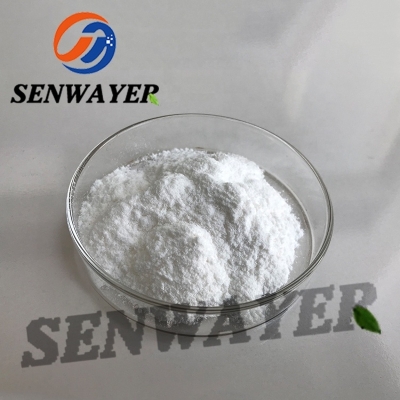-
Categories
-
Pharmaceutical Intermediates
-
Active Pharmaceutical Ingredients
-
Food Additives
- Industrial Coatings
- Agrochemicals
- Dyes and Pigments
- Surfactant
- Flavors and Fragrances
- Chemical Reagents
- Catalyst and Auxiliary
- Natural Products
- Inorganic Chemistry
-
Organic Chemistry
-
Biochemical Engineering
- Analytical Chemistry
- Cosmetic Ingredient
-
Pharmaceutical Intermediates
Promotion
ECHEMI Mall
Wholesale
Weekly Price
Exhibition
News
-
Trade Service
China’s innovative drugs have gone through the dawn period of the first ten years of the 21st century and the rapid growth period of the second decade.
A new period of radical change is beginning
In the past two or three months, people in the biomedical industry are experiencing a kind of pulsation of change, which is a sign of the arrival of a new era.
China’s innovative drugs have gone through the dawn period of the first ten years of the 21st century and the rapid growth period of the second decade.
The industry "giant whale" is turning
The industry "giant whale" is turningThis year, Minai.
1.
2.
3.
It is true that in the current pharmaceutical industry in China, there are only a handful of companies that can meet the above three conditions, among which are the “big factories” worthy of the name and no one knows, including Hengrui, Zhengda Tianqing, CSPC, Qilu, etc.
Today, these "giant whales", which are enough to affect the entire pharmaceutical industry, are undergoing new changes-they may replace "capital" (referring to investment institutions) and become the most powerful supporters of potential innovative drug projects in the future.
The most representative is nothing more than the positive actions of "One Brother" Hengrui
According to incomplete statistics, Hengrui Medicine has only 4 license in innovative drug projects in the past 10 years
Recently, Joseph E.
This is both the author's guess and the author's wish-there are too many BioTech companies in China, and for many years they have almost depended on investment institutions to support their development
On October 8, Shanghai Pharmaceuticals announced that it would spend 690 million yuan to introduce a new acid inhibitor X842.
In fact, Dr.
Innovators are heroes, and we don't want to see heroes fail
.
However, the complex situation we are facing now makes us even more need to calm down, stop doing me-too, streamline pipelines, and switch from competition to cooperation.
Pharmaceutical companies and pharmaceutical companies are holding hands together to pass the difficult times and welcome the return of value
.
The adventure from BioPharma to BigPharma
The adventure from BioPharma to BigPharma Every turn is an adventure
.
And every step forward is also an adventure
.
In the "Top 100 Chinese Biopharmaceutical Enterprises Innovative Power Series" announced this time, we are familiar with BeiGene, Cinda Bio, Junshi Bio, Hutchison Pharmaceuticals, Zai Lab, CStone Pharmaceuticals, etc.
, based on innovative research and development.
, And companies that have successfully launched innovative drug products on the market have basically appeared in the top ten of "China's TOP30 Small Molecule Drug Innovation Ranking" and "China's TOP30 Antibody Drug Innovation Ranking"
.
If in the next ten years, 3-5 BioPharma companies will continue to expand and become international BigPharma companies, then the above companies are also the most likely and competitive players-their R&D investment in 2020 will exceed 10 100 million yuan, BeiGene is even more than 8 billion yuan, more than the other five companies in terms of R&D investment
.
There is no doubt that BeiGene's attack on BigPharma is loud and steady
.
In line with the corporate mission of "establishing a new generation of biopharmaceutical companies, with our courage, continuous innovation, challenge the status quo, so that the highest quality treatment solutions benefit billions of people around the world", BeiGene has established a team of more than With a team of 2,000 scientists and clinical medicine experts, relevant clinical trials are carried out in more than 40 countries and regions, covering developed markets such as Europe, the United States, and Japan, as well as developing markets such as Eastern Europe and Asia-Pacific
.
To this day, Cinda Bio is already the "leader" of China's biopharmaceutical companies
.
However, Cinda Bio will not slow down because of this, but will march towards "the world's leading biopharmaceutical company"
.
Dr.
Yu Dechao, the founder, chairman and CEO of Cinda Biotech, often asks everyone at the meeting, if there are ten steps in a ladder leading to “world-class”, at what level are we now?
Cinda's vision is undoubtedly the world's leading enterprise
.
From October 2020, Dr.
Liu Yongjun, the former head of Sanofi's global research and a world-renowned scientist in the biomedical industry, announced that he joined Cinda, a personnel change that shocked the entire industry
.
Relying on independent R&D and externally-introduced R&D strategies, Cinda now has 23 drug candidates entering clinical trials around the world
.
Among them, 4 models have been approved for marketing, 5 models are in registration or key clinical stages, and 14 models are in clinical phase 1 or phase 2 different stages, covering monoclonal antibodies, double antibodies, small molecules, cell therapy and other fields
.
Cinda’s ambitions are pushing it to embark on an adventure from BioPharma to BigPharma
.
Both Hutchison Pharmaceuticals and Zai Lab have a profound relationship with Du Ying, and both have ambitions and have the potential to grow into a global biopharmaceutical company
.
Established in 2000, Hutchison Pharmaceuticals had an ambitious vision to develop global new drugs in China from the very beginning
.
Now it is not only the leader of China's pharmaceutical innovation enterprises, but also the spokesperson of China's pharmaceutical system reform and technological progress
.
Fruquintinib, Sofatinib and Servotinib-these three products independently developed by Hutchison Pharmaceuticals were born from the laboratory in Zhangjiang, Shanghai, and embarked on a journey to the world to deliver the "Chinese solution" to the world "'S business card
.
Since its establishment, Zai Lab has developed rapidly.
It combines license-in and independent research and development to "walk on two legs", and has become partners with a number of world-leading biological companies.
Currently, there are 21 types for more than 60 different indications.
The product is in the development stage
.
Among them, 11 products are in the later stage of clinical development
.
Considering that "Zaiding" means "against the top of China's pharmaceutical innovation", we can't help but give this company superior imagination
.
However, although the above-mentioned companies may be ambitious or have the potential to sit on the bench of BigPharma, they still need the blessing of "Blockbusters" (blockbusters) to move into this ranks
.
In fact, whether BioPharma can "catch the big fish" is an important watershed for BioPharma's success, development and even success in going to sea
.
All in all, the development of new drugs and the success in the market are inseparable from strength and opportunities.
To become BigPharma is not only the choice of the company's efforts, but also the creation of the times
.
Perhaps in the next ten years, we can see powerful Chinese companies achieve leap in scale and influence through historic large-scale mergers and acquisitions
.
"Going to sea": boost confidence and find direction
"Going to sea": boost confidence and find direction There are many gazes looking "over the sea", but the journey to sea is extremely difficult for most companies
.
The clinical trials and approval of the market may still be within range.
Considering the follow-up market sales, they have to face countless barriers that need to be broken
.
Or perhaps, what we need is patience and confidence.
Looking at it from the perspective of ten years, ten years ago, we couldn’t imagine that today’s innovative medicine industry was flourishing.
Then in the next ten years, there will surely be the “difficult "Going to the sky" has become a natural phenomenon
.
According to reports, China has provided or is providing vaccine assistance to more than 100 countries and 4 international organizations, and exported vaccines to more than 60 countries, with a total of more than 1.
2 billion doses, ranking first in the world
.
According to the statistics of import and export data from the General Administration of Customs of China, the export value of human vaccines (customs code 30022000.
Mainly new crown vaccines) in August reached 12.
393 billion yuan, which is the second consecutive month of single-month exports exceeding 10 billion yuan
.
From January to August this year, China’s cumulative export value of vaccines reached 58.
201 billion yuan
.
This achievement means that many countries recognize our products.
Although it does not mean that all markets can become buyers of domestically-made innovative drugs, it can at least give us confidence that overseas markets will not become us in the short term.
Friendly positions, especially the mature markets of developed countries such as Europe, America and Japan
.
But at the same time, mature markets will not prevent good products and companies from advancing
.
In August of this year, the anti-PD-1 monoclonal antibody drug Teriplizumab combined with gemcitabine/cisplatin independently developed by Junshi Biotechnology was approved by the U.
S.
Food and Drug Administration (FDA) as the first-line treatment for patients with advanced recurrent or metastatic nasopharyngeal cancer.
) Breakthrough Therapy Designation-This is also the second breakthrough therapy designation granted by the US FDA within one year
.
Not only for Junshi Bio-it is a huge achievement for the entire Chinese biomedical industry
.
You know, R&D giant Roche has about 4-5 FDA Breakthrough Therapy Designations (BTD) each year in the past seven or eight years
.
Obtaining two BTDs within one year is a great breakthrough for Chinese pharmaceutical companies that have only started for a few years
.
On October 8, BeiGene issued an announcement stating that the company's product Zebutinib was approved for marketing in Australia: it is used to treat adult patients with Waldenstrom's macroglobulinemia who have received at least one therapy in the past, or as a first-line therapy It is used to treat patients who are not suitable for chemoimmunotherapy
.
Previously, Zebutinib has been approved for listing in the United States, China, Singapore, Arabia, Canada and other countries and regions
.
These iconic events all prove that the "barrier" of the overseas market and the "high wall" built by the so-called multinational pharmaceutical companies will one day be broken by progressive domestic companies
.
Our country has created miracles one after another in "going out to sea" in the past few decades, and now, perhaps the baton of the times has been handed over to the biomedical industry
.
Anchor the track and look to the wider sea
Anchor the track and look to the wider sea When the author sorted out the new drugs approved in China from 2011 to the present according to different indications, I found that the local innovative drugs that have been approved or are about to be approved (submitted to the NDA) are heavily clustered in the oncology field
.
Among them, lung cancer, which is the most common indication in China, has more than 18 innovative drugs, but colorectal cancer, which is second only to lung cancer in the annual incidence, is only Hutchison Pharmaceuticals Furaquintinib and Corning Jerry’s Envolitin.
Resistance is involved
.
In the field of hematological tumors, the products of almost all companies appearing in the article have also been assembled, but there are no new drugs approved for marketing in tumor types such as pancreatic cancer, prostate cancer, cervical cancer, bladder cancer, endometrial cancer, and kidney cancer
.
In addition, few innovative drugs have been approved in the oncology fields with high incidence of gastric cancer, esophageal cancer and thyroid cancer
.
In addition to tumors, only autoimmune diseases, hepatitis B, hepatitis C, AIDS and other infectious diseases and some infectious diseases have more than three innovative drugs approved
.
There are mature therapies in other fields (thus making it extremely difficult to develop superior new drugs), or because the number of patients is small (rare diseases), or because the research and development is extremely difficult, and the key mechanism has not been broken scientifically, there is no domestic Corporate layout
.
However, Dr.
Chen Li, the founder of Hua Medicine, believes: “Even in the field of diabetes where 95% of the problems are solved, there are still 5% of unmet clinical needs
.
Whether it is to control complications, improve the quality of life of patients, or To solve the problem at the root, there is still demand and commercial potential
.
" Dr.
Shengfeng Li, CEO of Biotech, also believes that Best-in-class drugs will continue to be the goal pursued by companies for a long time to come
.
Many people in the industry believe that after the “PD-1 fever” and the publication of the document “Clinical Value-Oriented Anti-tumor Drug Clinical Research and Development Guidelines” by CDE, the “tumor fever” will Will go through a period of moderate cooling and return to rationality
.
At the same time, more companies will march into the vast unknown sea of other unmet clinical needs
.
Regarding this point, Dr.
Wu Jinzi said, “Before considering any issues concerning the prospects of the Chinese pharmaceutical market, one must bear in mind that there are 1.
4 billion people in China, and the problem of difficult medication must be solved first
.
The clinical value-oriented approach does not necessarily lead to a lot of profits.
But there is no way out for companies that are not clinically value-oriented
.
"
With the continuous improvement of China's biomedical innovation capabilities and the continuous transformation of innovative achievements, more and more biomedical companies have the ability to "self-generate" and develop towards the global market
.
And this is just the beginning of the take-off of China's innovative drug market
.
Zhang Buyong, President of Punctuation and General Manager/Principal Researcher of Meinenet, pointed out that by 2029, innovative drugs are expected to grow to 800 billion yuan at an average annual growth rate of about 20%, occupying half of the hospital market
.
However, the 800 billion forecast data does not allow innovative drug companies to sit back and relax.
On the contrary, the competition they face will become more intense
.
According to data from Meinenet, the revenue of TOP20 biopharmaceutical companies in 2020 is 65.
8 billion yuan, accounting for 24% of all companies in the industry.
Considering that the industry is still very young, the concentration will inevitably increase in the future, which is important for those who have not entered the market.
The other BioTech companies in the group are not optimistic
.
In the next ten years, the policy of encouraging innovation will continue, and the only constant will be competition and change
.
As BigPharma matures, BioPharma fiercely grabs a spot, and local innovations are gradually going overseas, China's innovative pharmaceutical industry will surely expand its map of indications.
Every innovative pharmaceutical company needs to make its own way in the continuous integration and adjustment pipeline.
, Look towards the wider sea
.







